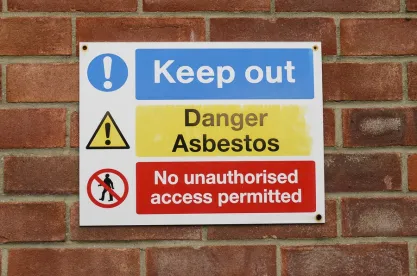Manufacturers may be troubled by a new opinion from the United States Supreme Court that may portend broad recognition of a duty to warn of hazards in other companies’ products. In one of his first cases on the Supreme Court, Justice Kavanaugh held for six Justices of the Supreme Court that manufacturers of pumps and turbines that needed asbestos to work can be liable for failing to warn about the dangers of a product they did not manufacture – asbestos.
In Air & Liquid Systems Corp. v. DeVries, the Supreme Court majority announced a three-part test in which a manufacturer has a duty to warn when:
(i) its product requires incorporation of a part,
(ii) the manufacturer knows or has reason to know that the integrated product is likely to be dangerous for its intended uses, and
(iii) the manufacturer has no reason to believe that the product’s users will realize that danger.
Recognizing at least some of the potential consequences of its holding, the Court explained that the rule is "tightly cabined" to maritime law, given that the plaintiffs claimed exposure to asbestos while serving on Navy ships. The Court also said its test does not require manufacturers to warn in cases of "mere foreseeability" but only when "their product requires a part in order for the integrated product to function as intended."
Justice Gorsuch authored a dissenting opinion joined by Justices Thomas and Alito. Justice Gorsuch began by reminding that the common law has long taught that Manufacturer A has no duty to warn about Manufacturer B’s products, even if B’s products might be used in connection with A’s products. This makes sense, according to the dissent, because Manufacturer B is in the best position to understand and warn about the risks of its products. Requiring Manufacturer A to warn about the hazards in B’s products not only increases liability for A and the cost of A’s products, it also can render both A’s and B’s warnings less effective to protect consumers. Justice Gorsuch offered two everyday examples:
A home chef who buys a butcher’s knife may expect to read warnings about the dangers of knives but not about the dangers of undercooked meat. Likewise, a purchaser of gasoline may expect to see warnings at the pump about its flammability but not about the dangers of recklessly driving a car.
The dissent worries that the result may be “long, duplicative, fine print, and conflicting warnings that will leave consumers less sure about which to take seriously and more likely to disregard them all.”
As the dissent recognized, the ramifications of this case may extend far beyond the majority’s express limitation to maritime law or even an indirect limitation to asbestos litigation. Any product that has various component parts – or is intended to be used in connection with another product – may fall within the majority’s rationale. That is especially problematic when some of those component parts or connected products tend to wear out over time and require replacement. When something goes wrong, plaintiff lawyers are likely to argue that the manufacturer of a non-defective product is liable for failing to warn about the risks of someone else’s defective product, and they can cite the United States Supreme Court to support that theory of liability. It will be up to manufacturer defendants to remind state and federal judges around the country that the Supreme Court expressly limited its decision to the maritime context.





 />i
/>i

